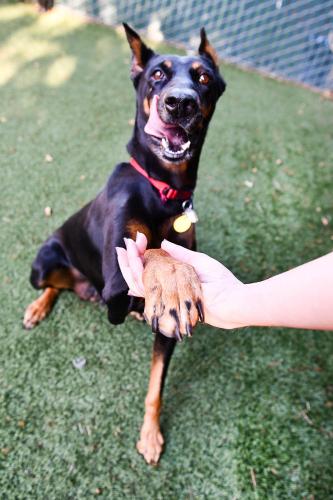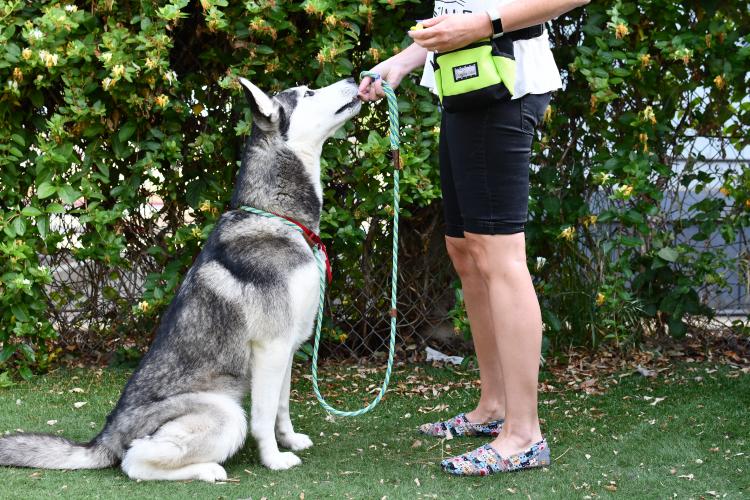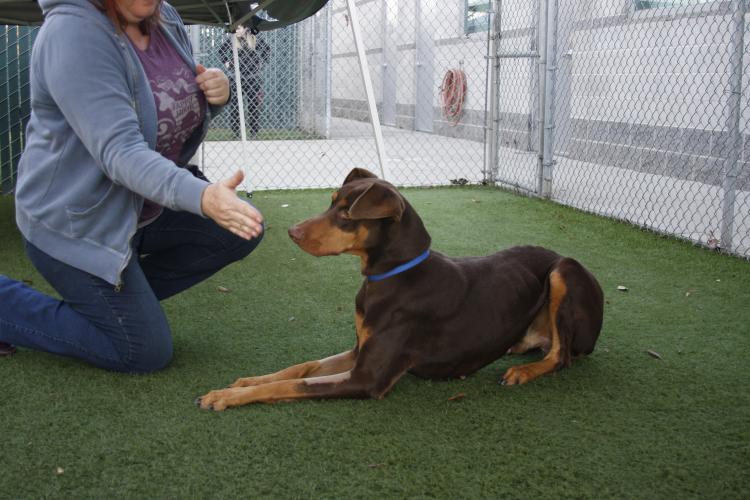Guest Blog: How to Change a Dog’s Mind
Why punishment may have the opposite effect
Belinda Breen, B.S., KPA-CTP, Animal Behavior Specialist at the Sacramento SPCA
So you want to change your dog’s behavior? You do an internet
search.
Which article or video should you choose? Maybe you talk to a
neighbor, and they tell you what they did with their dog. Should
you follow suit?
The field of animal behavior is unregulated. This means that essentially anyone can dole out advice (and charge for it) on how to modify Fido’s behavior. Most of what is available to pet consumers is based on myth and misunderstanding. Many “proven” techniques sold to the public are actually detrimental to your animal’s mental health.
In order to change a dog’s mind and their behavior, we have to understand why the “naughty” behavior happens in the first place. If an animal does something, it meets a need for that animal. Just like us, animals do things that allow them to get their needs met. When Fluffy jumps on you as you walk in the door, this meets her need for attention and access to you.
Most people try to fix behaviors by stopping them in the moment. We call this punishment. Punishment is not defined as something painful or abusive; it means doing something to decrease the chance the jumping will happen again. Common forms of punishment include: verbally correcting or scolding the dog (“No!,” “Eh eh!”), physical corrections (pulling up on the leash or collar), corrective devices (vibration collar, prong collar, choke chains) and social intimidation (loom over, use a stern voice).
Does punishment stop behavior in the moment? It can. However, we say it is a “sloppy” way to train because it:
It doesn’t teach a new skill.
It does not address the underlying cause of the problem; it suppresses symptoms. We all know what happens when you suppress something over a long period of time (think volcanos!). This is one of the reasons that we often see an increase in aggression and anxiety when punishment methods are used.
It creates associations we can’t control.
In the moment, we think what we are teaching is for the dog NOT to do something. What is actually happening, however, is that the animal is connecting dots in their mind, making associations we do not know about.
For example, I have a client who was told to put a vibration collar on their dog, so when they were out on walks and their dog barked, the vibration collar buzzed. They thought they were teaching their dog to not bark at other dogs. I got called out to their home after the dog refused to walk past the front entryway. After doing some investigating, we learned that the shoes the husband wore on the walks were sitting at the front door. What was the dog looking at right before she barked and got zapped? The shoes the man wore! In her mind, the shoes and other dogs were predictors of unpleasant sensations.
You can see how this is not an effective way to address her skill deficit. She needs help feeling comfortable around other dogs. Zapping her for barking is not going to teach her that.
Another common place people use punishment is in potty training. Many people have told me they read somewhere to rub the dog’s nose it or to verbally scold them. In this case, the dog has now learned that it’s not safe to go potty in front of you, so they will often hide to do it or delay going in your presence (like when you are standing out in the yard waiting for them to go).
Lastly, punishment requires higher and higher levels to continue to be effective.
While we are increasing the level of correction, we are decreasing the rapport we have with our learner, our dog. Learning is hard, especially when we don’t share a common language. Being a humane trainer means you learn to understand what your dog is communicating to you.
Positive reinforcement is all about meeting the animal where they are at, teaching them new life skills, and building positive associations with us and their world. It is about capturing behaviors you like and rewarding them. Rewards can include food, play, attention, access to toys, and access to activities.
Interested in learning more about dog behavior? Join our new series of K9 classes!



